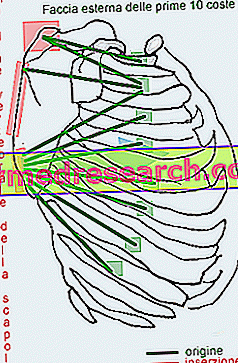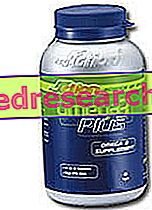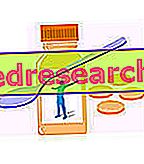Cosmetics and web: information or disinformation?
There are different types of consumers of cosmetic products: the most demanding ones are not content to read the information contained in the packaging and do not trust the advice of their neighbor or their beautician, but want to know, understand in detail what they buy and apply daily on the skin.
With the EEC Directive 76/768 / EEC, the indication of all the components contained in the finished product has become mandatory by the countries of the European Union, producers and importers: the label has thus become the priority tool for informing consumers regarding the characteristics of the products on the market and has acquired a progressive value for the protection of consumer rights.

The laws governing the marketing of cosmetics exist but are not sufficiently comprehensive and in step with the times. As an example, an important topic like sustainability (economic, environmental and social) is not regulated and we do not find rules on biodegradability, biocompatibility and environmental impact. Everyone knows that the cosmetic is a source of pollution in the various stages of the supply chain, from production to disposal and, even if the orientation of the industry is increasingly directed towards the "green", we are still far from optimizing the processes. What to do then to satisfy one's need for information? Nothing could be more immediate than probing the web ocean where, apart from biodsing, it is possible to find information and explanations about any subject, but where the pitfall of running into everything and the opposite of everything is always lurking . The result of such widespread and unverified information is greater confusion which is equivalent to disinformation. As a result of the desire to better understand the "essence" of the cosmetic product by the attentive consumer, we have witnessed, over the last decade, the explosion of interactive sites on the web, where it is possible to confront and exchange tips, experiences and opinions : through online blogs the products are analyzed, the "good" or "bad" ingredients are indicated, there is comfort in being told that the choice in buying your own product has been apt. The success of these sites, whose visitors have high expectations of cosmetics, is due to the fact that, with good reason, many consumers place greater trust in independent sources and on parts, compared to hyperbolic and often misleading advertisements . In particular, in the field of natural / biological cosmetics, the wordings reported on cosmetic packaging are not always written in a clear and correct way, but, on the contrary, terms such as natural, biological, eco and sustainable are often misused creating confusion and disorientation.
Biodizionario: pros and cons
One of the most discussed initiatives is the Biodizionario that, since 2000, has been proposed as a new point of reference for consumers who aspire to greater awareness, for novice cosmetologist formulators and companies that approach the natural and sustainable. The consultation of the biodizionario is very simple (or simplistic for the detractors) and consists in inserting the name of the substance in the appropriate box and waiting for the appearance of a judgment assigned by traffic lights on the model of that used for television programs: red if not okay, double red if it's not acceptable, yellow if there are any doubts and green if it's okay.
We are not entirely in agreement with the detractors of biodizionario, who argue that it is misleading and incorrect to judge a product from the list of ingredients alone, attributing simple identifying marks, because even if it is beyond doubt that the cosmetic is a complex system and the "Quality" of the product must be the sum of multiple factors that contribute to determining a perfect balance, it is also true that there are no other objective evaluation criteria: the label represents the only tool that consumers have at their disposal to protect themselves. In our opinion, the biodizionario is often aligned with the assessments and restrictions imposed by the various certification bodies operating in natural cosmetics and whose criteria are based on toxicological data and scientific research. Another consideration is that the ingredient is judged from different angles, so if the substance is synthetic and is prepared with a less ecological production process, but performs important functions within the product, it is not "rejected": therefore radical and extremist positions are not assumed. However, a dictionary, by its very definition, is: “ a work that gathers, always in an orderly manner, also according to criteria varying from one work to another, the proper names and notions inherent to a particular sector of human knowledge or even human knowledge as a whole, providing a discussion of it ". On the other hand, Biodictionary does not allow us to understand the meaning of what we have been looking for: in our opinion, its limit is the "castration" of critical consumption, since the ingredient is stoned, but no explanation is given about the evaluation criterion of the same. It is also true that in the era of sustainable development, of attention to one's health and the "mythization" of all that is natural (eg also curare and strychnine poisons), the criteria of evaluation is well known and essentially concerns the biodegradability, the dermocompatibility and the naturalness of the substance, but, above all the non-experts, will find it difficult to understand what is the "fault" that afflicts the ingredient: "Will it cause me rashes?", "What serious damage will I contribute to the fish fauna?" And, again, "is it a synthetic disgrace what I am spreading?" Or, worse still, "is it a collection of all these atrocities?". "No, if it were, he would have two red labels instead ... but if it is at the bottom of the INCI, all in all, I can consider myself safe . " The consideration is wrong, because if I am allergic to benzyl alcohol, a component of the perfume, it takes very little to trigger the adverse reaction.
The work of in-depth study of the biodizionario would be immense but would provide really useful tools to understand what the limits or potential of the substances are, allowing the user the ability and satisfaction of critically processing a judgment and being able to choose, so to speak, the lesser evil or the best good, compatibly with one's own needs, to the state of health of one's skin and in line with one's "very personal" philosophy of life. Another weakness of Biod required is, in our opinion, the expression of a single person's point of view. It would indeed be an influential tool if it could bring together elements of confrontation, in-depth analysis, judgments, elaborated by experts in different fields from chemistry to dermatology, which could contribute to providing exhaustive knowledge about the multifactor complexity represented by the cosmetic product and all the possible implications that it involves, to the skin and the environment. After all, the true judgment on the safety of a product must come from the regulatory authorities, regardless of the nature of the ingredients. An efficient network in support of cosmetovigilance, filtered by health professionals such as Doctors, Pharmacists and Herbalists, would be much more useful and useful than blogs, information sites, Wikis, dictionaries, and more. As it is written on the website of the Ministry of Health “The Ministerial database on cosmetic products, fed by the same subjects that today provide to communicate to the Ministry of Health the start of production and marketing of cosmetic products, will be an indispensable tool for the systematic collection of notifications of the beginning of production and placing on the market of cosmetic products, it will be able to guarantee an efficient system of supervision of cosmetic products present on the national territory, allowing the Ministry to place, for the sole purpose of safeguarding health protection, the actual situation of the cosmetic products present on the national territory.
This database will automatically record the reports received concerning the individual products. "
In conclusion, while acknowledging the limitations, we consider the Biodizionario a good starting point for a conscious cosmetic culture: the road ahead is still long but we are convinced that, if the scientists, the cosmetologist technicians and all those working in the sector, guided from common sense, put an end to mutual hostilities and join their voices, it would be possible to make a real and effective contribution to the growth of education for the conscious consumption of cosmetics by citizens, putting a brake on the spread of unjustified alarmism and providing a truly transparent information.



